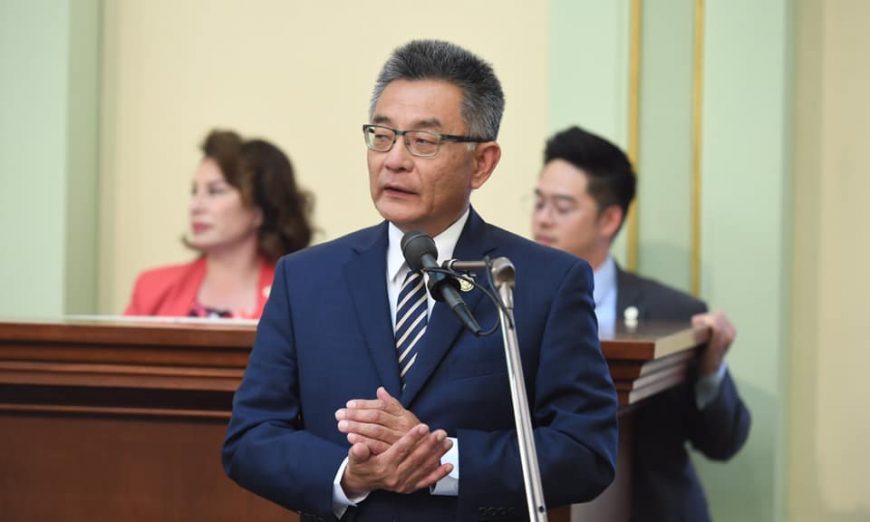Assemblymember Kansen Chu has announced that he will introduce a resolution urging Congress to authorize California to shift to permanent daylight saving time in January when the Legislature reconvenes.
Assemblymember Chu introduced Assembly Bill 7 to deliver on the voters’ overwhelming support of Proposition 7 that authorized the Legislature to end the biannual time switch. AB 7 shifts California to permanent daylight saving time in the March following its passage and Congressional authorization. Under the federal Uniform Time Act of 1966, states cannot shift to permanent daylight saving time without an amendment to federal law.
“I am committed to ending the harmful practice of switching our clocks twice a year and delivering on the voter’s decision at the ballot box in support of Proposition 7,” said Chu, who’s District is comprised of the cities of Fremont, Milpitas, Newark, Santa Clara, and San Jose.
“I share voters’ frustration that we will be shifting back to standard time on Sunday,” Chu continued. “Unfortunately, California and other states cannot move forward with permanent daylight saving time without authorization from the federal government. In January, I will introduce an Assembly Joint Resolution urging Congress to authorize states to practice permanent daylight saving time and continue my work to pass Assembly Bill 7 so California is ready for when Congress decides to take action.”
“Californians have spoken, and we must end this archaic practice once and for all,” said Chu.
In 2018, Chu passed legislation to bring daylight saving time ballot initiative, Prop 7, to voters. Californians overwhelmingly supported stopping the switch and gave the legislature the authority to decide whether California should stay on permanent daylight saving time. This year, AB 7 was introduced to move California to permanent daylight saving if Congress approves. AB 7 is going through the legislative process and will be heard in January 2020. However, the federal government will have to pass legislation before states can observe daylight saving time year round.
California is one of 14 states that introduced legislation in 2019 to shift to permanent daylight saving time. There are four bills awaiting action in Congress that would allow California to be on permanent daylight saving time. Representative Ro Khanna (D-CA-17) is a cosponsor of H.R. 1556 with Representative Vern Buchannan (R-FL-16) which sets the country on permanent daylight saving time. The bill is currently pending a hearing in the House Energy and Commerce Committee. There is an identical bill in the Senate, S. 670 pending a hearing in the Senate Commerce, Science and Transportation Committee. H.R. 1601 and H.R. 2389 both authorize states to shift to permanent daylight saving time and are pending hearings in the House Energy and Commerce Committee. Congress has until December 2020 to act on these bills.
The practice of switching our clocks twice a year dates back to World War I and II. During World War I, President Wilson adopted the practice to conserve fuel needed to produce electric power. California became one of the first states to pass a law on DST, and in 1966 the federal government passed the Uniform Time Act to create consistency among states. While DST was instituted to conserve energy, whether the practice still does is debatable. A Brookings Institute study found there are no actual energy savings under this time system.
Throughout the years, countless studies have shown the numerous adverse effects of switching our clocks twice a year and the benefits to daylight saving time. Specifically, these studies reveal the following health, safety and economic effects of our current system:
- A decrease in robberies during the daylight saving time period: Robbery rates for the entire day drop 7 percent and for that extra evening hour gained when we switch the clock during daylight saving time — robbery rates dropped 27 percent.
- The policy has significant electricity and environmental costs: A study in Indiana showed the policy costs residents $9 million per year in electricity bills. The same study found social costs of pollution range from $1.7 to $5.5 million per year and suggests these costs would be higher for other states.
- A significant increase in heart attack risk on the Monday following the time shift: Risk of heart attack increases by 25 percent the Monday following the switch.
- Rates of fatal traffic accidents significantly increase on both the Monday after the shift to daylight saving time and the Sunday of the shift to standard time: National data showed an increase in accidents from the average of 78.2 to 83.5 on the “spring forward” Monday.
- Rates of workplace injuries and work days lost increase due to sleep loss when we “spring forward”: Employees had 5.7 percent more workplace injuries the day following the loss of an hour of sleep when we shift to daylight saving time. Employees lost 67.6 percent more work days due to workplace injuries.
- Daily card spending decreases during standard time compared to DST: A study of Los Angeles showed a 3.5 percent drop in per capita daily card spending during standard time. Specifically, grocery stores are critically impacted — losing 6 percent of daily retail, and retail and discount stores lose 4.5 percent in daily spending.
Read the full Resolution here.







Assembly person Kansen Chu
It’s been two years since voters overwhelmingly voted to stay permanently on Daylight Saving’s Time and our representatives have done absolutely nothing about it.
Why has the issue NOT been brought to a vote in California and sent to Washington DC? Do you think if you ignore the Will of the voters that the voters will forget?
Now is the time to bring it to a vote while Washington DC is talking about this very same issue.
Voters want an answer… DO YOUR JOB AND REPRESENT THE VOTER’S WILL !!!
I expect an answer.
Bruce Rath, email: rathcannon@netzero.com